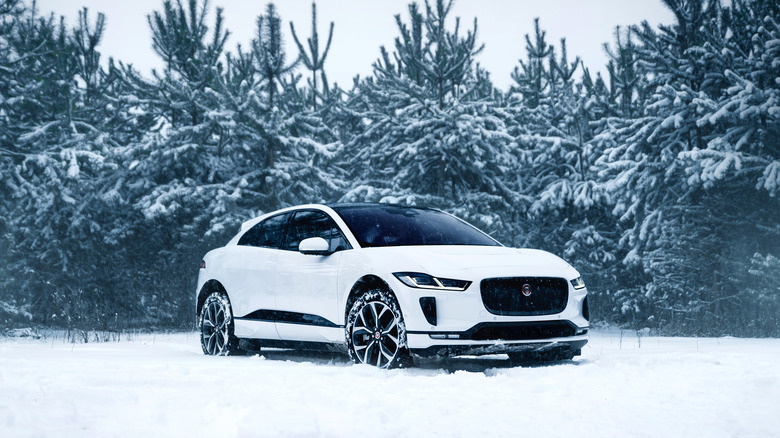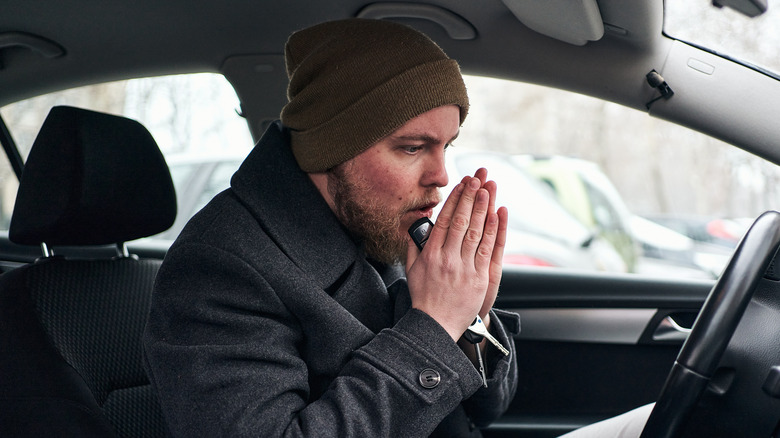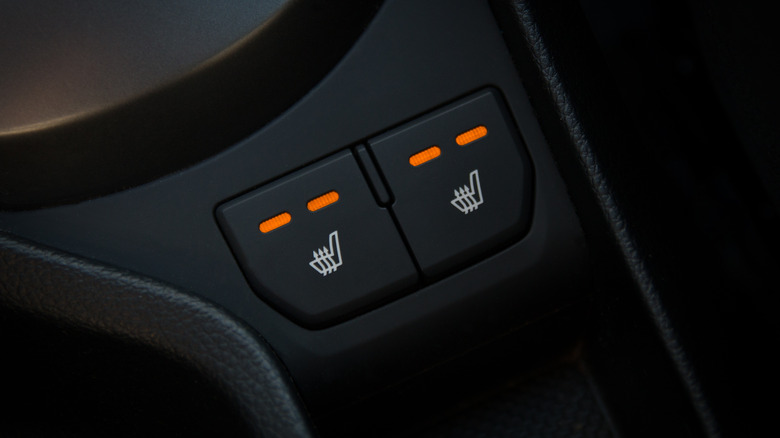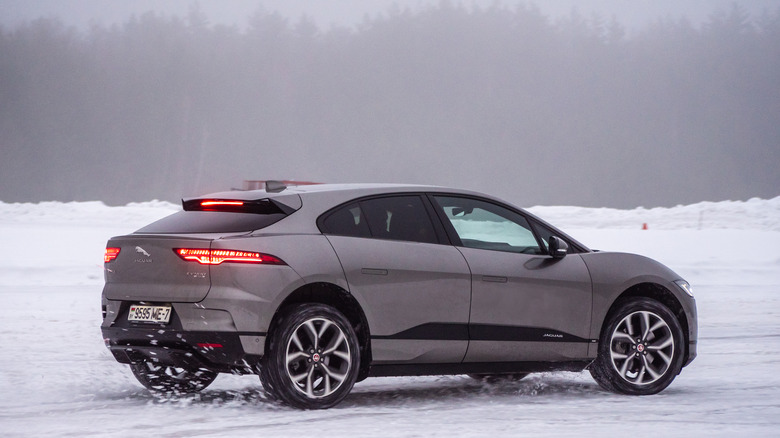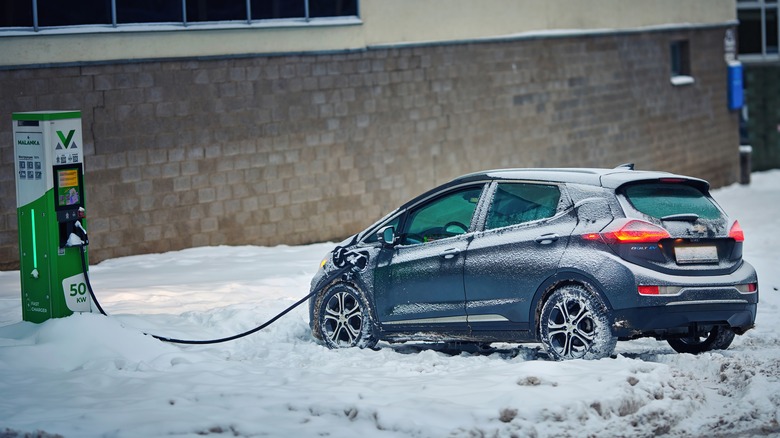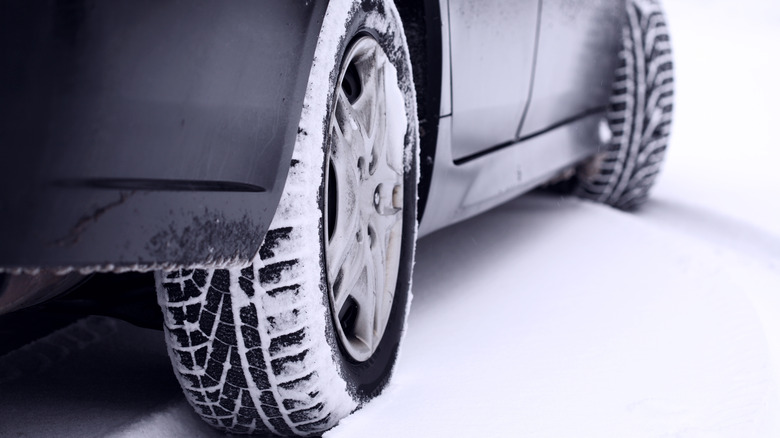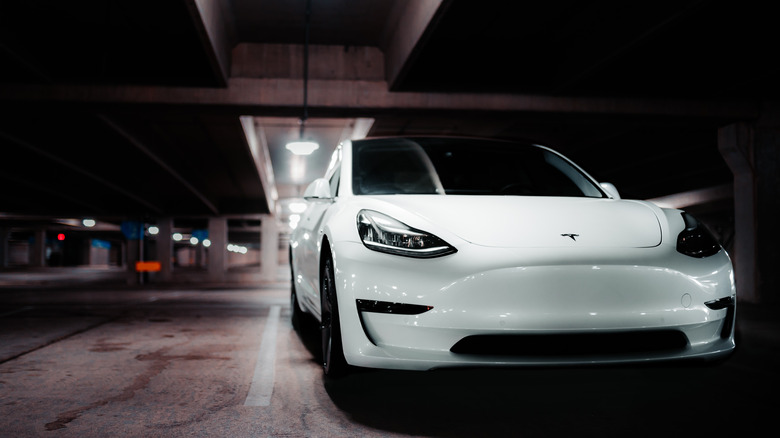6 Tips For Optimizing EV Range In Cold Weather
There's been a massive push for electric vehicles, and more and more people are going the electric route with a Tesla, Prius, or one of the other popular EV models on the market. Thanks to perks like lower fuel costs, zero emissions, and vastly improved cruising ranges, modern-day EVs are a practical solution for many car buyers. But while there's a lot that electric vehicles get right, the one thing that you'll need to be prepared for with an EV is that cold weather can significantly impact your car's range.
While this isn't surprising — all cars lose some efficiency in the cold — it can be a cause for concern with EVs because lower efficiency means lower range. In fact, a recent study by Consumer Reports indicated that an EV's range could drop between 25% and 50% based on the driving conditions and heating preferences.
While there's no way to avoid this if you live in a cold region, the good news is that any range loss is temporary. Additionally, there are multiple things you can do to make this range loss less extreme. Here's a look at a few ways to optimize your EV's range in cold weather.
Preheat while you're plugged in
In the winter, you can't drive comfortably unless you have your heater turned on. But this isn't the most energy-efficient way to heat your electric car. Since your EV draws energy from the battery to keep the interiors warm, the range takes a beating.
If you want to avoid draining the battery before you're too far along in your journey, the best thing to do is to preheat your car while it's plugged into a charger at home. This way, the power is drawn from the charger rather than your EV's battery, which, in turn, means a better range for you.
Your car likely has a preheat function that you can use through the associated EV app. Turn on the preheat function about 15 minutes before you need to leave so your car is sufficiently warm. While the most obvious advantage to doing this is that your cabin is at a comfortable temperature before you get in, preheating your car also allows the battery to warm up and come to an ideal temperature as well.
Use the seat heater
When it's cold, you want nothing more than to drive in a warm car. But if you're relying solely on the car's cabin heating system to warm the entire vehicle, you'll drain the battery pretty quickly, especially if it's a long road trip.
A far more efficient way to keep the interior warm is by using the seat heaters. You and your co-passengers are unlikely to notice a big change when you make this swap, but your battery will. Although heated seats use energy as well, they don't drain the battery as fast as the heater. So, turn the seat heaters on and set your primary cabin heater to a lower temperature to save energy and conserve the range.
This isn't the most foolproof hack, given that some EV models only have heated seats in the front and not in the back rows. Still, if you can take advantage of the heated seats (like when you're driving with just one other person), you should. You could also consider using a portable car heater while the seat heating is turned on for some additional heat.
Go at a steady pace
When you drive your EV at a higher speed, you're using up more energy, which, in turn, reduces your electric car's range. Sudden braking and acceleration can affect your car's efficiency as well.
While there's never a good time to speed, it's all the more important to drive at a steady pace in the winter months. Be sure to also accelerate, brake, and turn corners gently so you don't strain the battery unnecessarily. Not only will this prevent range loss, but it'll also keep you safe while driving on icy roads.
If driving your car at a slower pace is proving to be tricky, try using your car's eco-mode. Most EVs come with it, and using this driving mode increases energy efficiency, giving you a better range. While this will mean having to make small changes to your driving habits and may take some getting used to, the improved range may make it well worth the effort.
Keep it plugged in
Most EV manufacturers recommend maintaining a 30% to 80% battery charge. Not only is this optimal for your battery's health, but it also ensures that you have enough range to get you places. You can do this by regularly connecting to a charger so your battery never drains out completely.
While it's easy enough to plug into the charging system at home so you're starting your day with enough charge, it's best to make a note of charging points along your route before you hit the road. This way, if you're on a longer road trip or you've forgotten to charge your EV the night before, you'll be able to stop and plug in to maintain sufficient charge for the road.
Apps like Google Maps and Apple Maps can help you spot charging stations along your route. This may seem like a small step, but being prepared will ensure that your car never runs out of battery at an inopportune time.
Purchase winter tires
If you live in an area that gets snowed in often during the winter, you shouldn't rely on all-weather tires. You'll find that switching to winter tires or snow tires can benefit you significantly in the colder months. Winter tires, as the name suggests, are designed to offer better traction, superior handling, and enhanced performance. Not only does this keep you safe on the road, but it can also actually have a positive effect on your car's range.
Remember that the more work your EV has to do, the less efficient it's going to be and the less range it will ultimately have. Driving with the wrong set of tires on slippery roads reduces the overall grip, and your car will have to work a lot harder to maintain traction. This drains the battery quicker, which leaves your car with less cruising range. Swapping your tires for winter or snow tires can keep your car from using that much-needed battery power to maintain stability.
Just remember to change your tires once the cold months have passed. Like how you wouldn't drive with summer tires during winter, it's best not to drive in the summer with winter tires.
Park indoors and travel light
If you need to keep your vehicle parked for a few hours, it's best to do it in a covered parking spot or a garage. When it's cold, the efficiency of the battery decreases, which, in turn, affects the range.
Parking your car in a heated garage will ensure that the battery remains warm, keeping you from having to run the battery heating system. More importantly, your car battery won't die or lose charge from the cold weather. If you're unable to access a heated garage, an unheated, covered parking spot is the next best alternative. Even a spot that's just a few degrees warmer can keep your car from losing range.
Another thing that's worth doing is keeping your car as light as possible. The heavier your EV is, the more energy it's going to use up. So, if you're trying to increase the range, remove any heavy cargo and accessories from the car and make it a habit to travel light.
